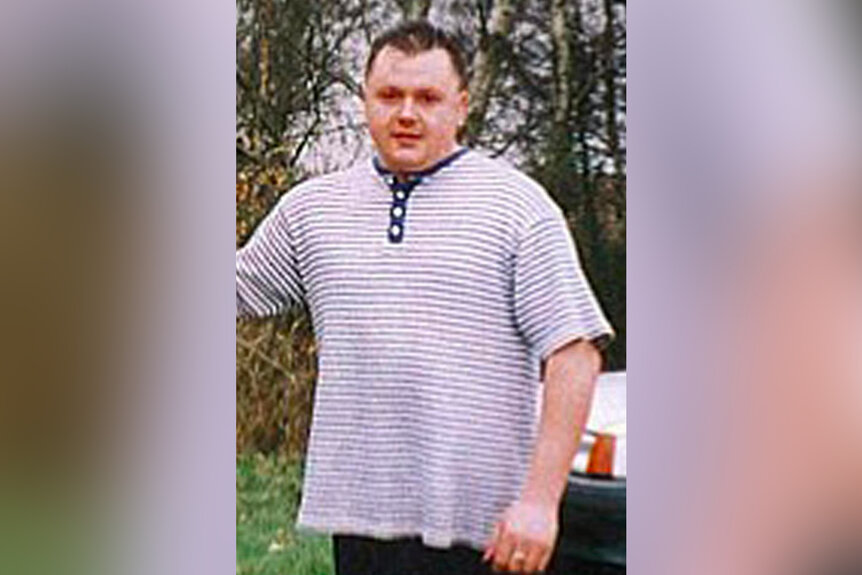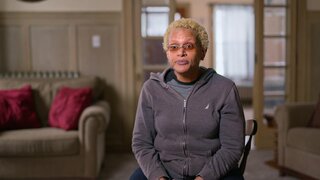Create a free profile to get unlimited access to exclusive videos, breaking news, sweepstakes, and more!
‘I Think It’s Him’: Ex-Girlfriend Helps Lead To Capture Of London Serial Killer
Levi Bellfield attacked and murdered woman around the London area in the early 2000s. His ex-girlfriend was eventually able to help police capture him.
On the afternoon of March 21, 2002, 13-year-old Amanda “Milly” Dowler vanished from a bus stop on her way home from school in the affluent community of Walton-on-Thames in southwest London.
Milly was reported missing by her desperate father that evening, and a massive search began for the teen. Had she been abducted in broad daylight?
There was a “huge house-to-house inquiry,” Kevin Knight, Detective Constable, Surrey Police, told “Living with a Serial Killer,” airing Saturdays at 9/8c on Oxygen. But nothing turned up.
Six months later, on September 8, Milly’s remains were found in a wooded area 25 miles from where she vanished. A couple who were picking mushrooms stumbled upon the grisly discovery.
The missing persons case had transformed into a murder investigation. A forensic investigation of the crime area turned up no evidence – no DNA, no fingerprints, no surveillance footage, no witnesses.
Like all of England, Johanna Collings was gripped by the murder. What she didn’t realize was that she had a deep connection to the case: Her relationship with Levi Bellfield, a nightclub doorman she started dating in the mid-1990s, bbc.com reported, tied her to it.
When she first met him she was in a vulnerable position, still dealing with the grief of losing her father. Bellfield was “a perfect boyfriend” in the beginning, Collings told producers.
He eventually moved in with Collings, who lived with her mother in southwest London. Not long into their relationship, Collings got pregnant. Right after the birth of their daughter, Bellfield’s behavior changed. If her phone rang he checked to see who was calling. He would invade her privacy while she was bathing. He’d tell her what to wear and what to say and question her fidelity.
Prof. Elizabeth Yardley, a criminologist, described Bellfield’s actions to "Living With A Serial Killer" as “textbook coercive control.” Bit by bit he stripped away her sense of being an individual.
His need for control escalated quickly, she said: “He raped me, he beat me up.” She struggled to find a way to leave, and her relationship with Bellfield, who took pleasure in boasting about having sex with other women, had grown increasingly strained.
Collings sought refuge in her love of horses, a passion that allowed her some escape from her domestic strife. It was the one thing in her life she would never allow Bellfied to control, she told producers.
In 1996, she said, she found a magazine in her garage that had been mutilated. Pictures of blonde women had been slashed. Like many victims of domestic abuse, she didn’t contact the police. But she was eventually able to walk away: In 1997, Collings, who was pregnant with her son, left Bellfield.
After Dowler's disappearance in 2002, more horror came to the community. In February 2003, 19-year-old Marsha McDonnell was walking home in southwest London after a night out with friends. She was attacked and struck repeatedly in the head and left for dead. She later died in the hospital.
Dowler and McDonnell were not the only victims of assaults, investigators told “Living with a Serial Killer.” There had been a series of attacks on lone women. Victims survived but were unable to help identify their assailant. Many victims had been attacked near bus stops, and many were blonde.
The community quaked in fear that a predator was in their midst.
In May 2004, 18-year-old Kate Sheedy made a desperate emergency call. Investigators learned that she’d gotten off a bus and was walking home when the driver of a white van with blacked-out windows deliberately ran her over twice. She survived, but had extensive injuries to her back and lungs.
Sheedy’s description of the vehicle was a break for investigators. The fact that she’d boarded the bus in Twickenham was another vital clue. Sheedy’s attack was like the ones on Dowler and McDonnell — but the weapon was a car, not a blunt object .
Three months after the attack on Sheedy, Amelie Delagrange, a 22-year-old French student, was attacked and killed after getting off a bus in Twickenham. The southwest London murders then became an international issue.
The team of investigators on the case doubled in size, according to Gary Cunningham, Detective Sergeant, London Met Police.
Ten days after Delagrande’s murder, investigators used cell phone data and got a major advance in the case. Police divers recovered her keys and mobile phone from a river at Walton-on-Thames, near where Dowler went missing. Police constructed a timeline of the crime and CCTV footage revealed a white van in the area when the murder occurred.
Detectives faced a daunting challenge to find the vehicle involved because white vans are ubiquitous. But Collings, who had been following reports of the murders, connected the dots and called the police. She told them to investigate her ex-boyfriend Bellfield.
“I think it’s him,” she told authorities.
Police confirmed that Bellfield drove a white van. Police didn’t have enough evidence to arrest him for murder, but Collings gave a statement that he had raped her. That gave officials cause to arrest him in November 2004. He was charged after police found him hiding naked under a pile of insulation in his home.
Bellfield was charged in the murders of Delagrande and McDonnell and the attempted murder of Sheedy in the spring of 2006. There was not enough evidence to link him to Dowler's killing.
Using phone records and surveillance footage and other evidence, investigators constructed a strong case against Bellfied. At Bellfield’s 2007 trial, Collings gave evidence about his abusive and violent behavior. He was convicted on the murder and attempted murder charges in February 2008 and sentenced to life behind bars.
With Collings’ help, investigators were able to eventually link Bellfield to Dowler’s murder. Her remains were found in woods that Collings and Bellfield frequented, bbc.com reported in 2011.
In June 2011 Bellfield was convicted for Dowler’s abduction and murder. He is now serving two life sentences.
To learn more about the case, including how Collings copes with her experiences, watch “Living with a Serial Killer,” airing Saturdays at 9/8c on Oxygen.


































